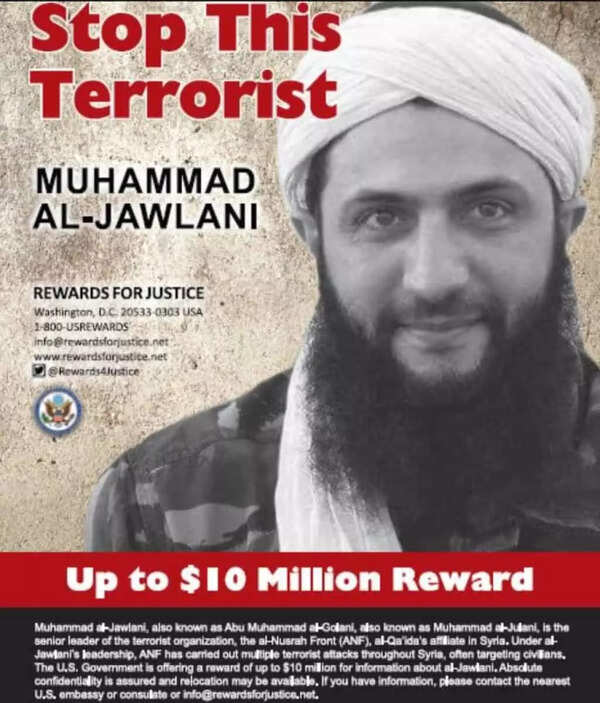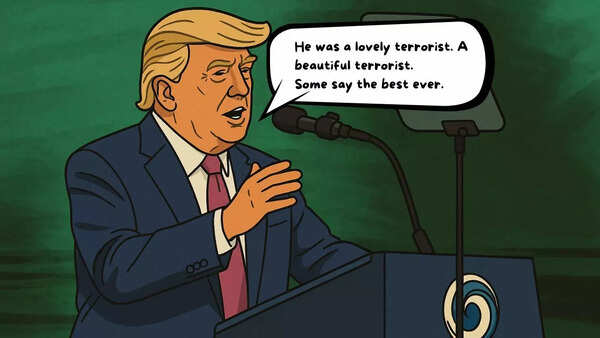After Donald Trump‘s meeting with Syria‘s time leader Ahmad al-Sharaa in Riyadh, the computer erupted, marking the second primary meeting between the two nations in 25 years. The meeting, which took place on the heels of a Gulf Cooperation Council mountain, was viewed as a significant change in American foreign policy and a possible crucial turning point for Syria‘s post-Assad time. What was particularly impressive about the meeting was al-Sharaa’s past. He was originally associated with Al-Qaeda-linked militant groups and fought against US forces in Iraq. He was formerly known as Abu Mohammed al-Golani. Before he became the leader of the Hayat Tahrir al-Sham ( HTS ) group, which seized Damascus earlier this year and overthrew the Assad regime, he had been taken prisoner and detained by American troops for a number of years. Celebrations erupted across Arab cities as a result of Trump’s decision to elevate long-standing US sanctions against Syria. With expectations high for financial relief and renewed international purchase, state media broadcast images of people gatherings, flag-waving, and lights in Damascus and Aleppo. The restrictions, some of which had been in position since 1979, had long kept Syria from international financial and payment methods.

Saudi Crown Prince Mohammed bin Salman and Turkish President Recep Tayyip Erdoan, who also participated in the conference, who were closed to the media, but White House officials confirmed that it lasted only over 30 days. Trump apparently used the situation to demand recognition of Israel, expel foreign soldiers from its airspace, and appoint power of Arab prison held by the Kurdish-led Syrian Democratic Forces. Gulf Arab states, which have backed Syria’s new command in an effort to counteract Iranian influence in the region, have been quietly supporting al-Sharaa’s authorities for months. Saudi Arabia and the United Arab Emirates both support the new regime’s re-entry into Arab politics, citing al-Sharaa as a Sunni-led counterbalance to Tehran’s regional interests. Importantly, the action has strained relations with Israel, which had warned the US against legitimizing the new Palestinian state. Israeli officials are concerned that al-Sharaa’s Islamic roots and military history could lead to upcoming conflict along the Golan Heights or make cross-border problems more likely. The lifting of sanctions was hailed by the Foreign Ministry as a significant turning point and a sign of global appreciation for the new administration, especially in Syria. Syria is in desperate need of capital injection, reconstruction assistance, and renewed access to northeastern oil revenue, all of which may be made possible under new financial arrangements due to its socialist monetary legacy and years of decades of devastation.

Trump’s Middle East trip, which includes stops in Saudi Arabia, Egypt, and the UAE, focuses on changing local configurations. His intervention in Syria is a part of a wider reform that aims to reduce immediate US military involvement and encourage local governments to accept responsibility for security and governance. Many of the commentary’s virtual reactions revealed a lot of discomfort over the meeting’s speed and significance. Some referred to it as a betrayal of previous counterterrorism commitments, while others saw it as a courageous political move that might lead to local stability. In the discussion, it was demonstrated how swiftly former adversaries may be rebranded as possible partners in a shifting political landscape. One of the most contentious images of this president, Trump-al-Sharaa may be known for the questions it raised about storage, morality, and the complexity of alliances. Not just for what it symbolized politely.




